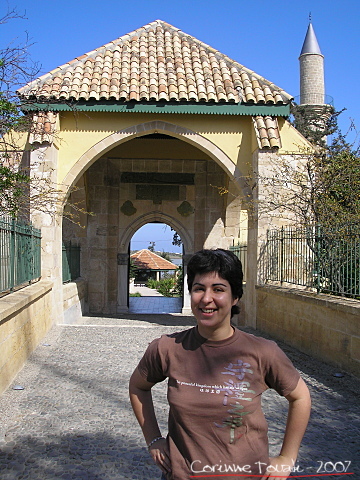"The Mosque of Umm Haram or the Hala Sultan Tekke, as it is known, is the chief Muslim shrine in Larnaca, on the island of Cyprus. It is also a listed Ancient Monument of B Schedule no.8 in the Larnaca District. The accounts regarding its existence have generally been dated from the first Arab raids on Cyprus (A.D 647 or A.D 649). The most likely account tells of the death of the wife of “Ubada bin al-Samit”, Umm Haram, during a raid upon the island organized by Muawiyah. She fell from her mule and died after breaking her neck during the siege of Larnaca. She was buried near the salt lake and her grave became a sacred shrine. Hala Sultan (Umm Haram) was the Prophet Muhammad’s ‘wet-nurse’. This Mosque named after her, lies in a serene and picture perfect setting on the shores of the Larnaca Salt Lake.
During the second half of the second millennium B.C, the area of the Hala Sultan Tekke was used as a cemetery by the people who lived in a large town a few hundred metres to the West. A part of this town was excavated by a Swedish archaeological mission and proved to be a major urban centre of Late Bronze Age Cyprus. More recent archaeological investigations conducted by the Department of Antiquities under the women’s quarter of Hala Sultan Tekke have revealed building remains dated to the late Archaic, Classical and Hellenistic periods (6th – 1st c. B.C). Several finds indicate that the site might have been used as a sanctuary but the limited scale of the investigations precludes definite conclusions about its use.
The Ottomans built the mosque complex itself in a series of stages in the late 18th and early 19th centuries. A shrine was built by Sheikh Hassan in A.D 1760. Later the mosque was constructed and the complex assumed its present form around A.D 1816/17. Hala Sultan Tekke is composed of a mosque, mausoleum, minaret, cemetery, and living quarters for men and women." (from wikipedia)
(8/98) |
|

